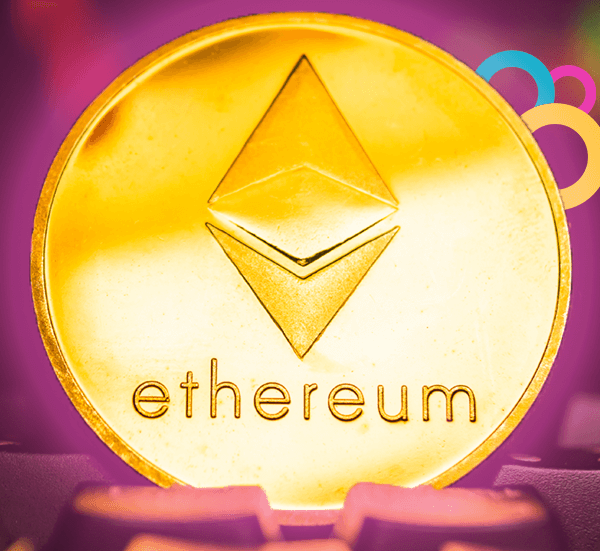
Fresh off the back of its latest EIP-1559 upgrade, the world’s number two blockchain network has pioneered a new generation of blockchain technology focusing on usage and wider-scale utility.
Ever since the beginning, Ethereum has had different ambitions from other blockchains such as Bitcoin. Whereas Bitcoin was first designed to solve the problem of transferring money between different entities (and has since come to be seen primarily as a store of value – the crypto world’s unit of account), Ethereum was envisioned as a platform that goes beyond financial use cases: a world computer that can run anything you can imagine through its smart contracts, self-executing code baked into the blockchain. And because Ethereum is permissionless, anyone can participate in it without approval and censorship. For the first time, a worldwide community of developers had something on which to build to create a variety of use cases previously scarcely imagined.
DeFi, NFTs and the rise of the Ethereum network
Fast forward to today, and the Ethereum network powers large portions of the day-to-day transactional activity occurring in the crypto space. In fact, we know that Ethereum has recently surpassed Bitcoin in the total number of active daily addresses – so what are people using it for?
The answer – right now anyway – is twofold. On the one hand, we have seen continuing momentum in the area of decentralised finance (the majority of which is still transacted on the Ethereum blockchain). Decentralised finance (or DeFi) is essentially banking without the bank, allowing you to lend, borrow and save within the decentralised, peer-to-peer smart contract system of the Ethereum blockchain. It has developed into a huge industry, and by latest reckonings has a total value locked of some $80 billion dollars.
The other Ethereum trend is in many ways completely different, but points again to Ethereum’s departure from pure finance. If 2020 was the summer of DeFi, 2021 has been the summer of NFTs, with people paying increasingly outlandish amounts to prove their digital ownership of a diverse array of avatars, digital artwork and encapsulated moments in time. An NFT can be thought of as a one-of-a-kind digital token issued to represent ownership of a unique item. And the record of that ownership is stored tamper-proof on the Ethereum blockchain. Like DeFi before it, this is already a multi-billion dollar industry, with an estimated $2.5 billion of NFT sales in the first half of 2021. As the NFT boom continues, there are an increasing number of innovative use cases for Ethereum-based NFTs, ranging all the way from event ticketing, blockchain gaming and NFT-linked community rewards, to perhaps one day authenticated ownership of physical assets. By any measure, this is big news and big development, and it is all built around the Ethereum network.
Web 3.0: the next paradigm shift?
Looking forward, I do think Ethereum has the potential to be the backbone of a new decentralised infrastructure. Part of that means the democratisation of the web – providing the decentralised alternatives for the day-to-day functionality we’ve come to take for granted, and gradually transitioning from centralised to more and more decentralised systems in all of our interactions online.
Online payments, internet browsing, data storage, video encoding, identity verification, domain and server hosting – there are decentralised solutions for all of these and many more, and as these grow in sophistication and adoption, there is the unique chance to provide people with reimagined solutions built around the user, not the platform … innovative, utility-driven decentralised applications underpinned by the network infrastructure provided by Ethereum and the successors it has inspired.
Translating technology into impact
The question I like to ask with all these technological innovations is: ‘What will this mean for us as people?’
And the answer as I see it, looking at all the Ethereum-inspired trends we have discussed in this article so far, is the increasing normalisation of blockchain technology, a gradual shift in the balances of power as we see more and more accepted decentralised solutions and, particularly valuable to those who need it the most, a chance of inclusion and autonomy that might not otherwise be available to them.
It’s the person who can access the loan the bank wouldn’t give them. The everyday saver who has whole new options on how to generate a return. The commentator who can share information because they have access to a decentralised, censorship-resistant data storage network. And no less validly, it’s the gamer who now interacts regularly with the blockchain because they are mad about the latest NFT game. It all speaks to the increasing and widening utility of blockchain applications, inspired by that early Ethereum vision and now carried on by a wide array of successors across the crypto ecosystem.
A blockchain future
There’s so much more I could say about Ethereum and how it is gearing itself for the future. It goes without saying, we are, still, in the early stages of mass adoption, and there remain ongoing technical challenges in scalability and transaction cost, Ethereum’s planned developments in response to which could take a whole other article.
However, what I think for sure is that Ethereum has triggered a new, broader understanding of blockchain, cryptocurrencies – and the decentralised applications that could be built on top of them. What Ethereum started, others have followed and, even today, Ethereum remains the powerhouse of many of the biggest trends.
Already, we’ve seen multiple multi-billion dollar industries emerge built primarily around the Ethereum network – and we’re only just scratching the surface. There will be many more, and the most exciting part is that we are not only passive observers but are actively participating and pushing adoption of technology and paradigms that have the potential to change the world we live in. Ethereum has one of the most active and vibrant developer communities in the world … the only question is: what will we innovate next?

